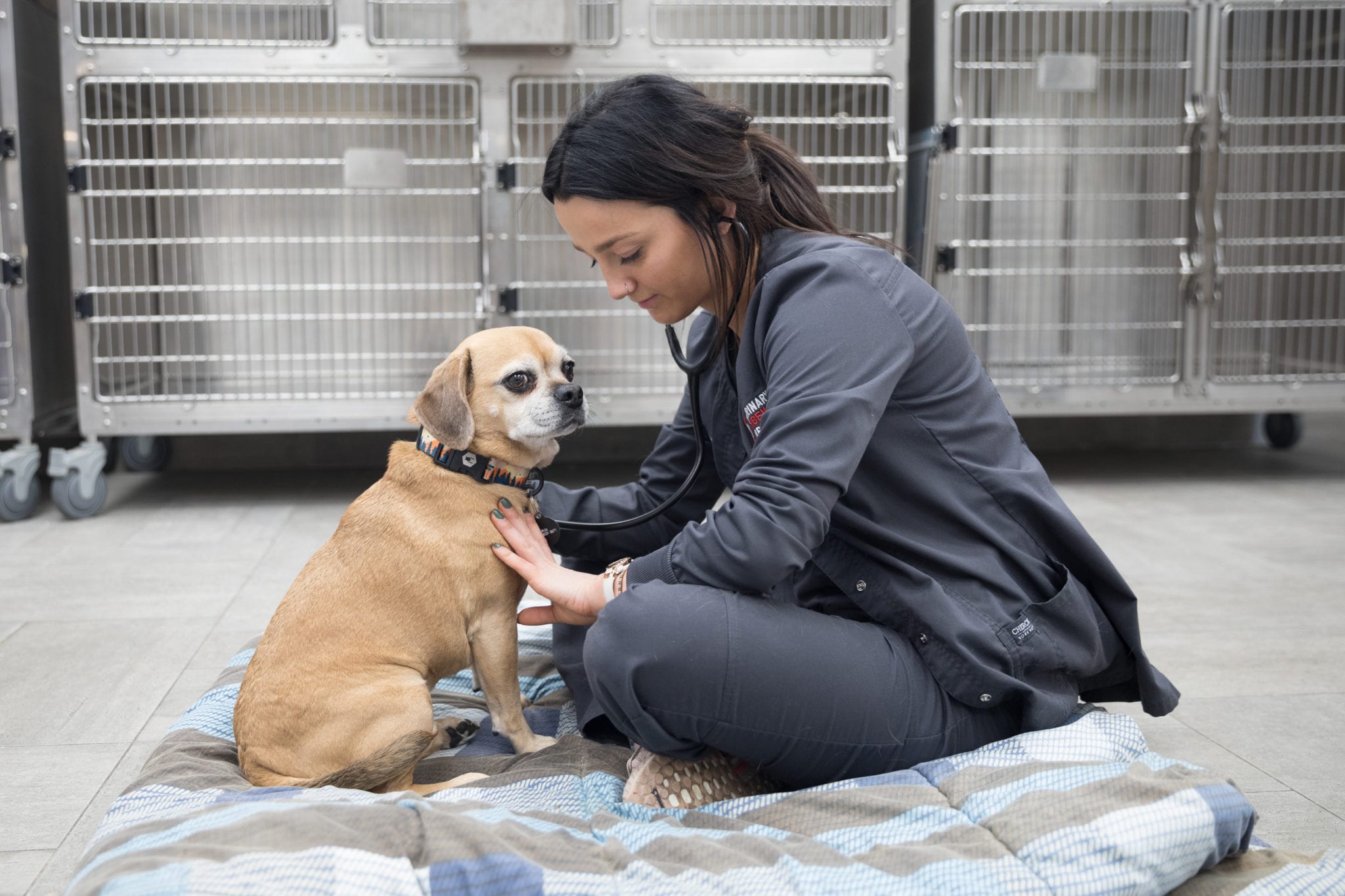
Heat Stroke in Dogs – What it Looks Like and What to Do About it
Dr. Kerri Nelson
Call & Speak with a doctor Open 24/7, Even Holidays!
Walk in today for:
Emergencies
Point-of-Care Ultrasound
Urgent Care
X-Rays
Diagnostics + Testing
End-of-Life Care
Surgery
Treatment + Hospitalization
Hot dog! Some geographic areas are hitting all-new temperature heights. And hot weather is something pet owners need to be aware of because our little loves rely on us to keep them properly protected. To help you out, we’re talking about heat stroke in this blog, specifically as it pertains to pooches.
WHAT TEMP IS TOO HIGH FOR DOGS?
A dog’s normal temperature is 100-102.5ºF. If your doggo ever runs a temp above 103ºF, your pup is at risk of heat stroke and it’s time for a trained veterinarian to run an intervention.
At Veterinary Emergency Group (VEG), we have protocols in place to handle a heat stroke emergency. If you suspect heat exhaustion or heat stroke, do not hesitate to call or come in for immediate care.
HEAT STROKE’S BIG THREE
Heat stroke is defined as a canine’s temperature exceeding 105.8ºF. Let’s take a quick look at the three main types of dog heat stroke:
- CLASSIC HEAT STROKE – Classic heat stroke occurs when an animal is exposed to an excessively hot and humid environment.
- EXERTIONAL HEAT STROKE – This type happens from excessive exercise, regardless of the ambient temperature.
- SECONDARY ISSUES AS A CAUSE – Heat stroke can occur due to secondary causes, such as uncontrolled seizures or tremors.
IS YOUR DOG AT RISK FOR HEAT STROKE?
All dogs are at risk of developing heat stroke depending on external factors, such as the heat index that day or being left in a hot car. (More on that later!)
However, some dogs are at a higher risk of heat stroke than others, including:
- Large-breed dogs with thick hair coats such as Newfoundlands and Bernese Mountain Dogs
- Brachycephalic or “smush faced” breeds such as Frenchies and English Bulldogs
- Obese dogs
- Dogs with pre-existing respiratory disease such as laryngeal paralysis, collapsing trachea, or upper airway abnormalities
KNOW THE SYMPTOMS OF HEAT STROKE IN DOGS
Heat stroke doesn’t hide; you’ll probably know it when you see it. Signs of heat stroke in dogs include:
- Collapse, labored breathing or excessive panting
- Dull thinking (mentation), which may present as lethargy, depression, less responsive
- Vomiting or diarrhea (either of which may be bloody)
- Signs of bleeding, such as bruising on the skin or gums
VEG TO THE RESCUE—HOW WE TREAT HEAT STROKE
Heat stroke can affect multiple organs. It can cause damage to the gastrointestinal system, kidneys, heart, lungs, and brain. It also severely impacts the hemostatic system—the way your dog’s body reacts to injury. For example, heat stroke can cause longer blood clotting times, which can lead to hemorrhage. Prognosis varies upon severity; in some cases, heat stroke is fatal, regardless of treatment.
So, because it’s an emergency, time is of the essence and VEG treats heat stroke aggressively. This includes:
- Fluid therapy / Plasma transfusions to control bleeding
- Blood pressure support
- Medications (gastroprotectants) / Antibiotics if bacteria is presence in the intestinal tract
- Anti-seizure medications if seizures are noted
KICK IT INTO GEAR—WHAT TO DO IF YOUR DOG HAS HEAT STROKE
Here’s what to do for your dog:
- Get to a cool area
- Offer cool water to drink, if there is no vomiting
- Wet down your dog with cool, not cold, water
- Don’t cover your pet with a wet towel – it can insulate and trap heat in
- Run the A/C in the car on high
- Call VEG and let us know you’re on the way
TIPS FOR HOT TEMPS – HEAT STROKE PREVENTION
- No pet left behind Never leave your pet in a hot car—even parking in a shaded area isn’t safe. The temperature can rise 20 degrees within only 10 minutes, and continues to climb as time goes on, even if windows are open.
- X out exercise Dogs often keep playing past the point that they should. Only exercise your fur baby in cool hours of the day, especially flat-faced breeds.
- Cool in the shade Make sure your pet has access to a shaded area and fresh water.
- Panting can be a problem Excessive panting is a cue that your pet is overheated. Don’t delay and call VEG for advice.
WE’LL PRIORITIZE YOUR PUP
VEG has ER locations that are open 24 hours a day for any pet emergency. If you think your dog has heat stroke, call or come in to your nearest VEG and see a doctor right away. We’ll triage your pet immediately, and you get to stay by their side the entire time.

